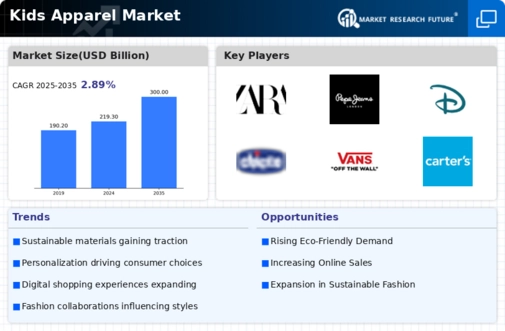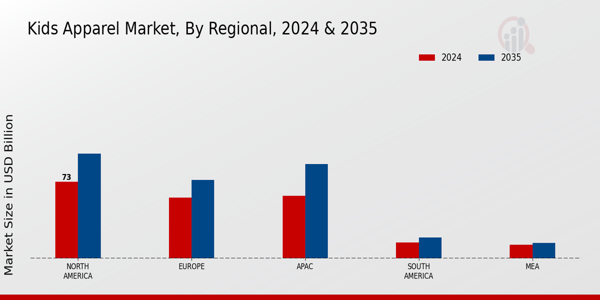Market Analysis
In-depth Analysis of Kids Apparel Market Industry Landscape
The global kids apparel market reached USD 186.2 BN in 2022 and is poised to grow to USD 265 BN by 2032, registering a 4% CAGR during the review period (2023-2032). The market operates within a dynamic framework, influenced by various factors that shape its trends, demand, and overall trajectory. One of the primary drivers of this market is the ever-evolving fashion trends and styles that impact the demand for children's clothing. The children's fashion industry is highly sensitive to changing trends, mirroring the adult fashion world but often adapting to more playful and colorful designs. This fluidity in trends leads to frequent changes in styles, colors, patterns, and themes, driving the continuous need for new collections and seasonal updates within the kids' apparel market. Consumer behavior and preferences are significant growth drivers. Several factors influence parents' purchasing decisions, including quality, comfort, durability, and price. Additionally, the rise in the focus on sustainable and eco-friendly clothing options has gained momentum in recent years. Parents are increasingly seeking apparel made from organic materials, that are free from harmful chemicals, and produced through ethical and sustainable practices. This shift in consumer preferences towards eco-conscious clothing influences the market dynamics, prompting brands to offer sustainable collections to cater to this growing demand. With the rise of social media platforms, children's fashion influencers, and celebrity endorsements, parents and kids are more exposed to diverse styles and trends, increasing demand for trendy clothing among children. Moreover, technological advancements and digitalization have reshaped the retail landscape, influencing the market dynamics of kids' apparel. E-commerce platforms and online retailing have grown substantially, providing consumers convenience and various options. The ease of online shopping, various customization features, and virtual try-on options have significantly impacted how parents shop for children's clothing. Seasonal variations and cultural influences also contribute to the fluctuations in demand within the Kids Apparel Market. Changes in seasons, festivals, and cultural events often drive the demand for specific types of clothing. For instance, there's an increased demand for themed or traditional clothing during festive seasons or holidays. Cultural celebrations and events also influence the demand for culturally inspired or ethnically diverse clothing options for children. Furthermore, economic factors such as income levels, disposable income, and spending patterns significantly impact the market dynamics of kids' apparel. Economic downturns or fluctuations can influence consumer purchasing behaviors, leading to shifts in spending on children's clothing. Value-driven purchases, discounts, and promotional offers become more appealing to budget-conscious consumers during economic uncertainties, impacting market trends and preferences.

















Leave a Comment